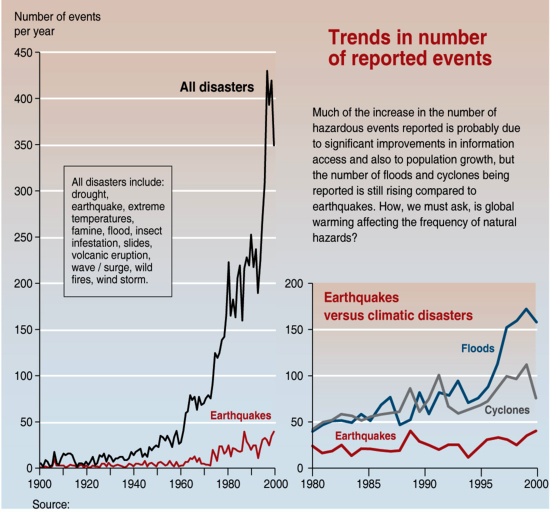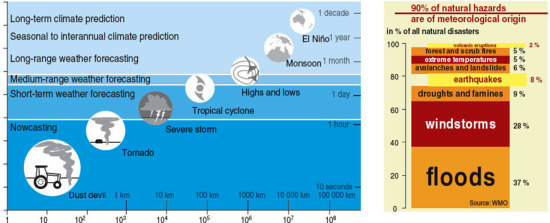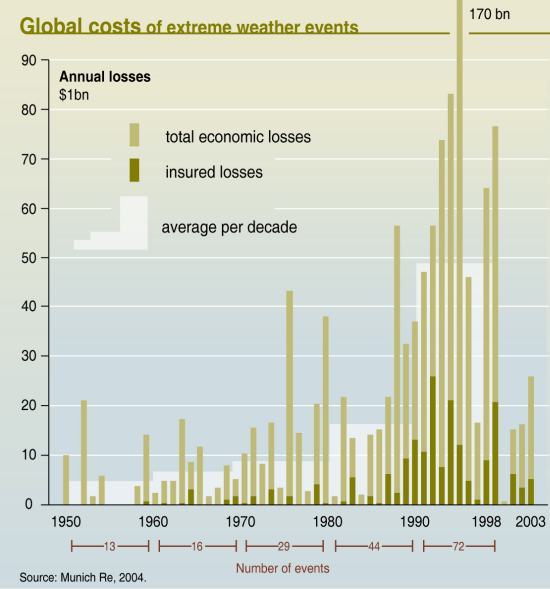 |
| |
| |
| |
 |
| |
| |
UN/ISDR
Platform for the Promotion
of Early Warning
Hermann-Ehlers-Strasse 10
D-53113 Bonn, Germany
Tel.: 0049 228 815 0300
Fax: 0049 228 815 0399
email isdr@un.org |
| |
|
|
|
Figures
|
| |
Trends in natural disasters
|
With growing population and infrastructures the world’s exposure to natural hazards is inevitably increasing. This is particularly true as the strongest population growth is located in coastal areas (with greater exposure to floods, cyclones and tidal waves). Any land remaining available for urban growth is generally risk-prone, for instance flood plains or steep slopes subject to landslides.
|
 |
| (Graphic: Centre for Research on the Epidemiology of Disasters, CRED) |
| |
| |
Early warning systems
|
Every year, disasters caused by weather, climate and water-related hazards impact on communities around the world, leading to loss of human life, destruction of social and economic infrastructure and degradation of already fragile ecosystems.
Statistics from the Centre for Research on the Epidemiology of Disasters (CRED) at the University of Leuven, Belgium, reveal that from 1992-2001, about 90% of natural disasters were meteorological or hydrological in origin; the resulting economic losses were estimated at $446bn, or about 65% of all damage caused by natural disasters.
|
 |
| (Graphic: WMO) |
| |
| |
Global costs of extreme weather events
|
The loss data on great natural disasters in the last decades show a dramatic increase in catastrophe losses. A decade comparison since 1960 is shown in the table. The reasons for this development are manifold and encompass the increase in world population and the simultaneous concentration of people and values in large conurbations, the development of highly exposed regions and the high vulnerability of modern societies and technologies, and finally changes in the natural environment like global warming and the related regional effects. As the underlying factors for the observed loss trend remain unchanged, a further increase in losses from natural disasters is inevitable.
|
 |
| (Source: Munich Re) |
|
|



